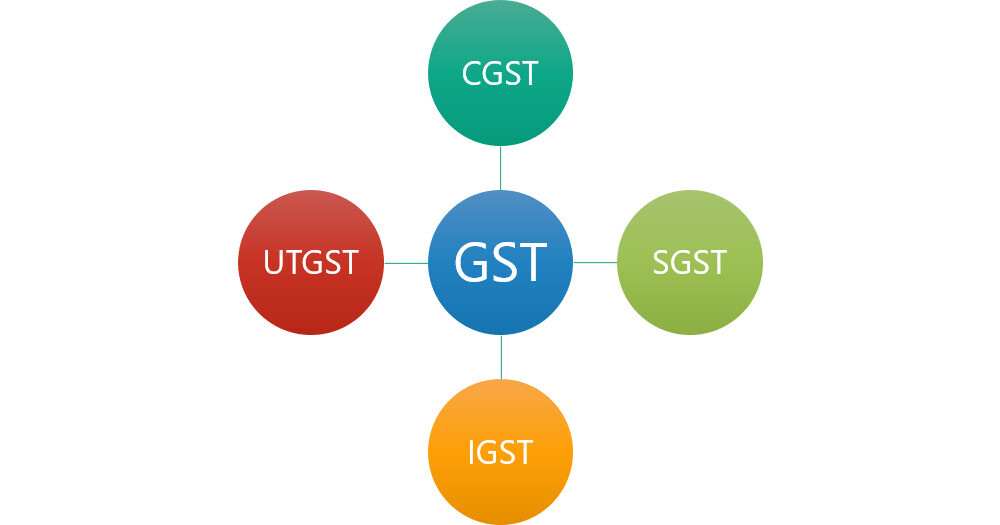7 Crore+ Customers

Affordable Premium

Accessibility Options

General

General Products
Simple & Transparent! Policies that match all your insurance needs.


37K+ Reviews
7K+ Reviews
Scan to download

Life

Life Products
Digit Life is here! To help you save & secure your loved ones' future in the most simplified way.


37K+ Reviews
7K+ Reviews
Scan to download

Claims
Claims
We'll be there! Whenever and however you'll need us.


37K+ Reviews
7K+ Reviews
Scan to download

Resources
Resources
All the more reasons to feel the Digit simplicity in your life!
 Tools & Calculators
Tools & Calculators


37K+ Reviews
7K+ Reviews
Scan to download

37K+ Reviews
7K+ Reviews
Select Preferred Language
Our WhatsApp number cannot be used for calls. This is a chat only number.

Enter your Mobile Number to get Download Link on WhatsApp.
You can also Scan this QR Code and Download the App.


On 1st July 2017, the government announced a new indirect tax regime under Goods and Services tax to replace several other indirect taxes like state VAT, customs duties, central excise duty, and entertainment tax. Understanding this new taxation system and its effects on businesses can be confusing. Therefore, to ease your understanding, we have curated a comprehensive guide on GST and its types.
Let’s begin!
In simple words, GST is a tax applicable to the value added to goods and services at each stage in the supply chain. There are four types of GST, namely, CGST, SGST, IGST, and UTGST. Each type features different taxation rates applicable at the buyer’s end.
If you are wondering how many types of GST are there in India, check out the following sections.
To understand the types of tax under GST, firstly, you need to understand the main motive behind this unified tax system’s introduction. The primary reason is to make the Central and State Governments independent of each other.
Read on to learn about the 4 types of GST that exist in India.
CGST stands for Central Goods and Services tax. It replaced all the previous taxes under the Central Government. Some examples of such taxes are central surcharges & cess and central excise duty. CGST is levied on the movement of goods within a state.
To understand the meaning of CGST, let us take an example.
If a manufacturer produces a good in West Bengal and sells it intrastate (within the state), both SGST and CGST will be levied. The former will go to the West Bengal State Government, whereas the latter will reach the Central Government. In most cases, the tax is divided equally between the State and Central Governments as per the GST council mandate.
However, it is crucial to note that the GST rates have been rationalized. The old multi-slab structure has been replaced with a simplified system. The CGST component will be half of the total applicable GST rate for an intra-state sale. For example, if the total GST on a product is the new standard rate of 18%, then CGST will be 9% and SGST will be 9%.
Hence, we can see that the maximum rate of CGST is 14%, as per data. The old multi-slab rate structure for CGST (e.g., 2.5%, 6%, 9%, 14%) is no longer applicable. Under the new regime, the CGST rate is determined as half of the total GST rate (e.g., 2.5% for a 5% total GST, 9% for an 18% total GST) for any intra-state supply.
The GST collected by the State Government is known as SGST, which is applicable on transactions within its geographical boundaries. Under the new tax regime, previous state taxes like entertainment tax, VAT, and State Sales tax became non-functional.
SGST stands for State Goods and Services tax, a single tax levied on intrastate supplies of goods and services, except for alcoholic liquor. It can be charged solely on a product’s transactional value – an amount the buyer needs to pay.
SGST features might vary state-wise since each State Government has individual acts. However, specific characteristics like taxable events, valuation, classification of goods and services, and measures are similar across the nation.
Thus, this tax embodies the objective of this new tax regime: one tax, one nation.
Similar to CGST, the SGST rates have been aligned with the new simplified tax structure. The SGST levied will always be equal to the CGST in an intra-state transaction. For instance, on a product with an 18% total GST, SGST will be 9%.
IGST stands for Integrated Goods and Services tax. It is generally applicable during interstate transactions, i.e., transactions between two different states. Among the types of GST, it’s levied on supplies of products and services between two states and even on exports and imports (IGST + customs). The Central Government is responsible for its collection as per the IGST Act. Let’s simplify this with the help of an example.
Suppose a manufacturer from West Bengal sells goods to a customer in Maharashtra. In this case, IGST will apply to the transaction value. The Central Government will collect this sum. Later, this amount will be divided between the consumer state – in this case, Maharashtra – and the Central Government.
Why does the tax go to the consumer state and not the manufacturing state? Because the buyer incurs the tax.
The IGST rate is the full applicable GST rate for an inter-state supply. Under the new regime, this means IGST is charged at the primary rates of 5%, 18%, or in specific cases, 40%, without being split.
UTGST stands for Union Territory Goods and Services tax, applicable to the transaction of goods and services in the Union Territories. It is levied on the supply of products in Andaman and Nicobar Islands, Lakshadweep, Daman Diu, Chandigarh, and Dadra and Nagar Haveli.
Note that UTGST is only applicable on Union Territories without a legislature.
Hence, Delhi, Puducherry, and even the newly formed UTs of Jammu & Kashmir are not liable for UTGST but SGST. Simply understanding the UTGST meaning is not sufficient. You must also know the applicable rates.
This tax is collected by the Central Government and is a substitute for the State Goods and Services tax in UTs. Thus, the UTGST percentage is similar to that of SGST, which are 2.5%, 6%, 9%, and 14%. Thus, the UTGST percentage is now aligned with the new SGST rates, meaning it is half of the total GST rate for an intra-UT supply (e.g., 2.5% UTGST for a 5% total GST). The old specific rates no longer apply.
Furthermore, after understanding the types of GST and rates associated with them, it is vital to know that the new rate structure has also impacted the list of zero-rated items. While many essential food items remain at 0%, several items like soap, shampoo, and toothpaste have moved from a nil rate to the new 5% merit rate. The list of zero-rated goods and services should be verified with the latest government notifications.
Therefore, this thorough guide on types of GST will leave no room for future confusion.
Persons with GST-registered businesses at any location in India are liable to incur taxes under this regime, whether it’s under the forward charge or reverse charge mechanism. It includes e-commerce operators as well.
Persons with GST-registered businesses at any location in India are liable to incur taxes under this regime, whether it’s under the forward charge or reverse charge mechanism. It includes e-commerce operators as well.
GST calculators are used in calculating the costs of GST applicable on a certain product. These are available on various third-party websites.
GST calculators are used in calculating the costs of GST applicable on a certain product. These are available on various third-party websites.
Every business is appointed with a unique GST Identification Number known as GSTIN. It is a 15-digit number signifying the state, PAN, and the number of registered enterprises within the state.
Every business is appointed with a unique GST Identification Number known as GSTIN. It is a 15-digit number signifying the state, PAN, and the number of registered enterprises within the state.